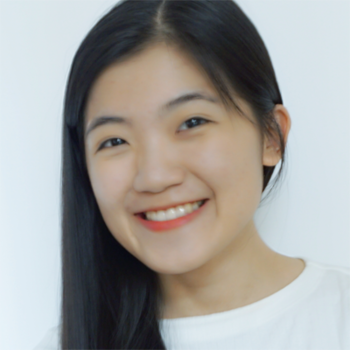Siying Xie

Neural Dynamics of Visual Cognition
PhD Candidate
Room JK 25/221b
14195 Berlin
I joined the lab in September 2017 for my Ph.D. study. Before that, I lived in Guangzhou (one of the megalopolises in China) for six years and studied Psychology there. I obtained a Master's degree at South China Normal University and a Bachelor's at the Guangdong University of Finance.
I am glad to introduce myself as a cognitive neuroscientist in training in light of "there is no end to learning (学不可以已)." As a scientist working with brain data, I find it extremely exciting to solve the "brain puzzles" with the evidence collected on my hands.
Things that I very much appreciate in life are coffee, tea, Chinese brush calligraphy (mainly in regular script 楷书), cycling, and swimming.
You can also find me on Twitter (@seeingxie) or GoogleScholar.
General research interests
My research interest is related to visual perception, mental imagery, and the development of visual cognition. I collect human brain data (i.e., electrophysiology and neuroimaging data) and apply multivariate analysis methods and machine learning techniques. My work focuses on two lines. In the first line, I address how feedforward and feedback information flow in the human visual cortex orchestrate the conscious visual experience. I have two projects under this line: Project 1 (finished) and Project 2 (ongoing). In the second line, I investigate the development of visual representations in the cortex. I have two projects under this line: Project 3 (finished) and the other is on planned.
Research projects
Project 1: Visual imagery and perception share neural representations in the alpha frequency band
Visual experience in mental imagery is phenomenologically similar to veridical perception. Unlike perception, imagery lacks feedforward information flow from the stimulus. Thus, shared neural representations between imagery and perception mainly reflect visual feedback information. This project used multivariate pattern analysis (MVPA) on time-frequency resolved EEG data to determine the temporal dynamics of neural representations in particular frequency bands. By comparing the oscillatory time courses of imagery and perception of objects, we found that imagery and perception share neural dynamics in the alpha frequency band. The project was co-supervised by Prof. Dr. Daniel Kaiser, and it has been published in Xie et al. 2020.
Project 2 The effects of backward visual masking on the spatio-temporal dynamics of visual object cognition
Visual processing involves feedforward and feedback signals through hierarchically organized brain areas. Even though accumulating evidence suggests that those signals play different roles in vision, their functional specificities are still subjected to debate. To sufficiently dissociate feedforward and feedback information flows, we applied the backward visual masking on daily objects and controlled the timing at which the visual mask followed them. By looking at the visibility controlled conditions (i.e., low- and high- visibility), we aim to distinguish the underlying computations in the feedforward and feedback information flows in space and time. This project is ongoing.
Project 3 Visual category representations in the infant brain
Visual categorization develops as a core human cognitive ability through extensive learning and interaction with the environment. We can recognize and categorize visual objects effortlessly and within the blink of an eye. What are the neural representations underlying this fundamental ability like in early life? In this project, we collected EEG data from 6- to 8-month-old infants while viewing four categories of objects: houses, faces, bodies, and toys. We clarify the nature of visual category representations in the infant brain and their developmental trajectory towards adult maturity in the critical characteristics of temporal dynamics, representational format, and spectral properties. I am thrilled to collaborate with great scientists (Prof. Dr. Stefanie Hoehl, Prof. Dr. Moritz Koester, etc.) on this project. There is a preprint (Xie et al. 2022) for this work.
Student supervision & opportunities
I am supervising Bati Yilmaz for his Master's thesis and not currently looking for an intern. However, I am happy to discuss and chat with you about science if you have similar interests. Feel free to get in touch!